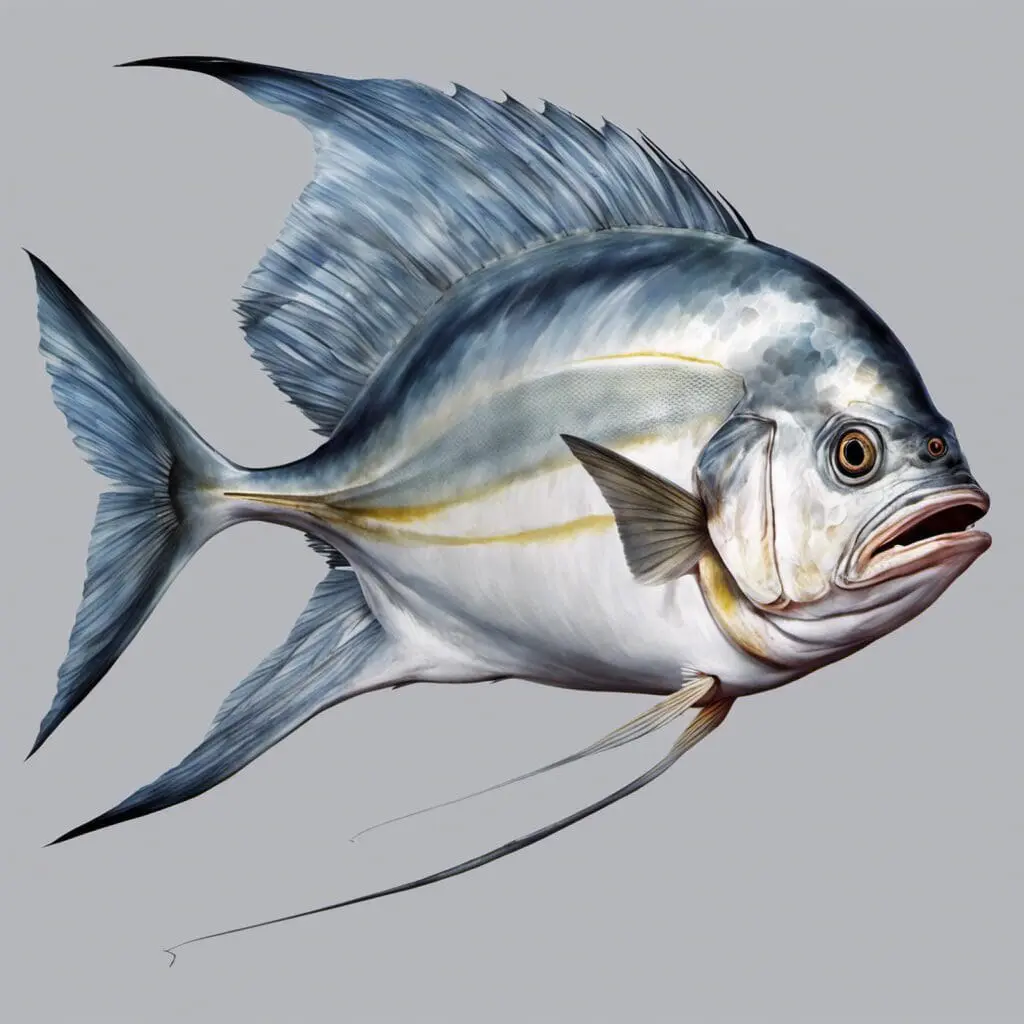The African pompano, scientifically known as Alectis ciliaris, is a species of fish belonging to the Carangidae family.
Conservation Status
The African pompano’s current conservation status is listed as ‘Least Concern’ by the International Union for Conservation of Nature (IUCN). Efforts to conserve the species include monitoring populations, controlling fishing practices and ensuring habitat protection.
Statistics
| Statistics | Average | Range |
|---|---|---|
| Length | 80 cm | 50-120 cm |
| Weight | 5 kg | 3-8 kg |
| Average Lifespan | 15 years |
Distribution
The African pompano is widely distributed across the world. Notable regions include the Indo-Pacific, Atlantic ocean, and Gulf of Mexico. There’s no specific migration pattern attributed to the species.
Habitats
African pompanos are found in tropical and subtropical waters. They prefer a depth range of 20 to 200 meters, tolerating a wide temperature range.
When and Where to See
While there’s no specific seasonal pattern attributed to the fish, the best time to spot an African Pompano is during dusk and dawn.
Best Fishing Locations and Tips
Top fishing locations for African pompanos include Hawaii, Florida, and the Gulf of Mexico. If you can’t head to these hotspots, general advice is to look for them in clear, warm, and deeper waters around reefs and wrecks.
How to Catch
Using live bait or lures like jigs and spoons is recommended. Techniques such as trolling and bottom fishing work best. Fishing is productive throughout the day, with peaks during early morning and late evening.
Identification Guide
African pompanos are typically silver-blue in color, have a rounded body with elongated dorsal and anal fin lobes in juveniles, and have small scales that progressively get smaller towards their tail. They are commonly mistaken for the threadfin jack and permit but are distinguished by their larger, more angular body.
Culinary
African pompanos are considered a delicacy, known for their mild, buttery taste and firm texture. It’s important to clean and cook the fish thoroughly to avoid any potential toxins. While they can be used in various recipes, grilling and braising are popular methods.
Additional Information
African pompanos are predatory fish, feeding primarily on crabs and small fishes. They face threats from larger aquatic predators and overfishing. The species doesn’t particularly stand out in cultural or historical significance.
References and Further Reading
For more detailed information on the African pompano, these sources are recommended:
1. IUCN Red List - Alectis ciliaris
2. FishBase – African Pompano
3. Florida Museum – African Pompano

